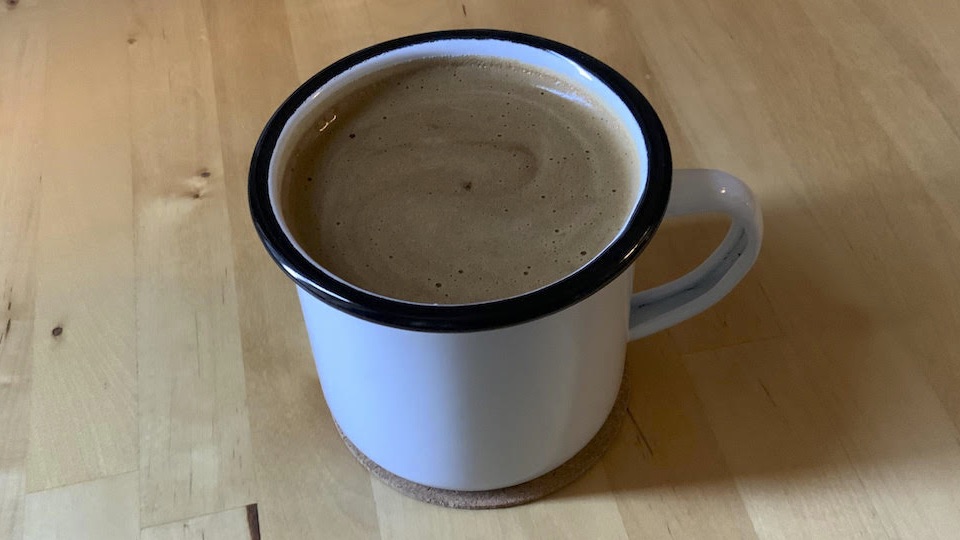Instant coffee is having a “moment,” as the kids say.
We can all agree that there’s a lot of uncertainty these days; as a result, we struggle to cling to those things we actually can be certain of. For me personally, I need to be able to depend on my morning coffee. Like a lot of people, it better be damn good; or else it could potentially ruin the day.
As far as coffee prep goes, I’ve owned a traditional drip, a Keurig, a cold press, a pour-over apparatus, and even a percolator. Thanks to the pandemic state of affairs, my coffee prep of choice is hot water and 2 Tbsp. of Instant.
Yep, you read right: I’m an instant coffee convert. Allow me to explain.
Instant coffee has been popping up on news feeds all over the internet lately, thanks to a recent craze surrounding “Dalgona” coffee. Dalgona is a concoction that’s part caffeinated beverage/part dessert, whose key ingredient is instant coffee. Not having made it myself, I can’t guarantee this; but it appears that any old instant coffee will do. Yes, that five-dollar giant jar of Nescafé from the corner bodega will do just fine for your Dalgona prep.
However, an offshoot of this instant coffee spike in sales also has to do with the unrelated but just as the sudden popularity of gourmet instant coffee. Almost as pungent an oxymoron as “jumbo shrimp”, gourmet instant coffee is most definitely a thing—and a big thing at that. So why would otherwise sane people pay nearly 2 dollars a cup (or more) for something made from powder and hot water that you (gasp) have to boil yourself? Here are three very good reasons.
Instant coffee is accessible and easy to make—and hard to screw up. When making fancy-schmancy coffee at home, you need a number of resources: time, equipment, and a fair amount of skill. I recall painstakingly cleaning the bean grinder, measuring proportions of grounds to water, etc. Even owning a Keurig (the Roomba of coffee machines) required regular cleaning and access to the preferred pods, which sometimes were not available.
Instant coffee requires a spoon, a way to make hot water (I literally use a saucepan on the stove) and if you’re wary of going into the market, a way to accept deliveries. Once you have the instant coffee, you spoon it into the cup, add the water, and boom. Too strong? Add more water. Too weak? Add more powder. Can’t do that with a cup of weak French press.
Instant coffee is sustainable and earth-friendly. Yes, I did my research: in spite of the amount of processing required to convert coffee beans into instant coffee, it’s still more sustainable than traditional coffee-making processes. Once it gets into your home, it results in less waste, too. Nobody wants to imagine sea turtles and dolphins swimming through an ocean of plastic coffee pods: drinking instant, even once in a while, is a way to do your part (or at least an awesome by-product). Bonus perk (pun intended): instant coffee is more shelf-stable than conventional ground or bean coffee, too.
There are instant coffees on the market now that taste as good as brewed. Wait: hear me out. I am a self-proclaimed coffee snob. Ever since walking into the original Starbucks in Seattle back in the early ’90s and drinking my first Grande, I was never able to go back to Dunkin’ Donuts/7-11/gas station coffee. Allow me to offer a shortlist of decent instant coffees that are worth the price tag:
About a dozen years ago, I tried a sample of Starbucks’s then-new line of instant coffee, at my local Starbucks store. While it wasn’t at the level of their fresh brew, it was noticeably more drinkable than the instant Folger’s of my youth. Their secret: blending traditional instant-coffee-process granules with ground coffee beans. Not messing around there.
Fed up with the substandard coffee at hotels, I bought some then (and years thereafter) to bring with me when I travel, and it’s been a lifesaver. Not literally, obviously: but anyone who’s grappled with jet-lag and travel fatigue understands the importance of a strong and palatable cup o’ joe. Available in supermarkets, Starbucks stores, and online in several varieties.
These days, my go-to travel buddy is Laird Superfood’s Instafuel. A longtime fan of Laird Superfood coconut-based creamers (since going dairy-free), I was eager to try Instafuel, which is simply high-quality instant Arabica coffee mixed with their coconut creamer (sweetened or unsweetened varieties available online to order). Because I like mine a little light and sweet, this has been my go-to for travel the last couple of years. Available online and in selected stores; their website also has a discounted auto-ship option and rewards points.
If you want a sophisticated cup meted out in single-serving packets like Via, I recommend Waka coffee. It has a rich taste with chocolatey overtones, and their single-serving packet was strong enough for me (one who usually doubles up). Waka is available by the bag as well. They also have a light roast and a decaf variety, made using the Sugar Cane EA process.
Another instant coffee available with coconut creamer added is Sipp Instant. I have to admit, I am a little obsessed with this product. Co-owned by Luke Zocchi (personal trainer to Chris Hemsworth) and Dylan Garft, this company based in Australia offers organic, fair-trade coffee mixed with coconut milk powder, probiotics, and organic grains to help stave off any impending crash. This stuff is delicious, and when mixed has a head on it like a pint of Guinness. It’s not cheap, though, and the shipping from the land of Oz is pricey and lengthy. The good news is that currently, the exchange rates are such that you get a bit of a discount. Is it worth it? Absolutely.
Honorable Mention: While Jot may not be instant coffee in the recognizable sense (freeze-dried granules), it is an “instant” approach to making coffee and worth mentioning for its convenience and taste. Jot is “ultra-concentrated” coffee, available only by mail-order on their site. It arrives in adorable little bottles and your first order comes with an enchanting metal spoon that will measure out your Jot (an acronym for “just a tablespoon”) to perfect proportions. Jot also prides itself on its zero-waste production process and offers an auto-ship option. I do drink it regularly, but found I needed almost double the ‘jot’ to bring it to my desired strength, and the smoothness of taste to be almost too smooth: I add Laird Turmeric creamer to give it an added “kick.”
-Laura Rebecca
Photo courtesy of the author



Came for the coffee, stayed for the pun! Very interesting!
LOVE my instant coffee!! Use sweeter and a scoop or two of instant cappuccino for that little bit of to richness and flavor… OH BABY!!!
Sure you like instant coffee. I want someone to tell me that that doesn’t use milk and sugar! You can cover a multitude of sins with creamer and sugar.
Thanks for your comment, Chris! Good point, but here’s an updated addition to the list. I discovered Nescafe NES earlier this year in France; it’s instant espresso, and you can get it on Amazon. I was able to drink it and enjoy it without cream and sugar, and it even has a little ‘crema’ on top that you seldom see outside of a cafe! Cheers!